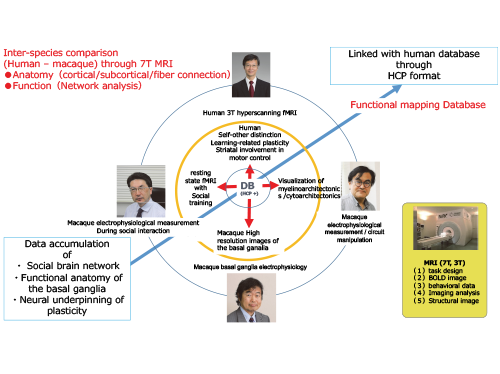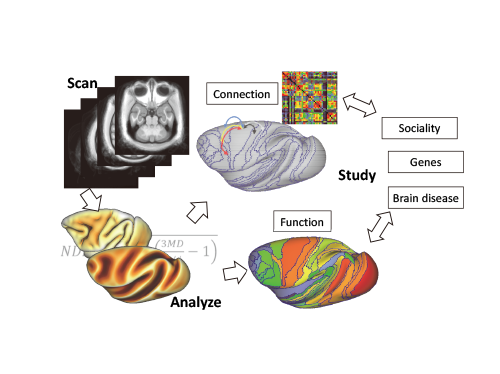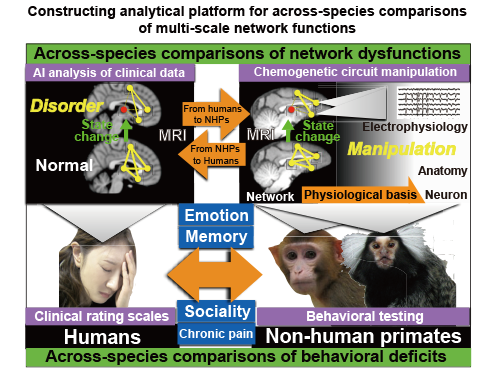- HOME
-

- Research
Research Group 2
Research involving an inter-species comparison of human and non-human primate brains
Research involving an inter-species comparison of human and nonhuman primate brains by structural and functional regionalization and homology analysis
Study of cross-species comparisons of human and non-human primates using high field MRI

Norihiro SADATO
M.D., Ph.D., Professor, Section of Brain Function Information, Supportive Center for Brain Research, National Institute for Physiological Sciences
Human neuroimaging technologies such as MRI are invaluable in order to elucidate the neural substrates of cognitive functions which are impaired by neurological or psychiatric disorders. To evaluate their functional relevance, however, it is essential to combine this with animal experiments. Here, we propose the construction of a 7TMRI-based imaging platform that enables direct comparison between the human brain and those of non-human primates. The 7TMRI-based imaging platform will promote the understanding of the neural substrates of social cognition and the functional anatomy of basal ganglia, both of which are critical to understanding the pathophysiology of psychiatric disorders. Furthermore, the platform will elucidate the mechanism of neural plasticity at the circuit level, and this understanding is critical for rehabilitation medicine.

Primate Connectomics using Multimodal Standardized Neuroimaging

Takuya HAYASHI
M.D., Ph.D., Team Leader, Laboratory for Brain Connectomics Imaging, RIKEN Center for Biosystems Dynamics Research
How did our human brain evolve and acquire humane functions? To solve this issue, we develop non-invasive neuroimaging techniques involving data acquisition and analysis that are standardized across species. We aim to comprehensively understand the brain function, architecture, and connectivity (connectome) particularly in relation to mechanisms underlining sociality and brain diseases, and to translate this into the development of medical techniques.

Establishing a multiscale platform for the analysis of brain circuit function by an interspecific, bidirectional approach with circuit manipulation and machine learning

Toshiyuki HIRABAYASHI
Ph.D., Principal Researcher, Department of Functional Brain Imaging Research, National Institutes for Quantum and Radiological Science and Technology
The aim of this research is to construct an analytical platform for linking brain circuits in humans and non-human primates to understand the function and dysfunction of the human brain as a multi-scale operation from brain-wide networks to single neurons. By combining machine-learning analysis of neural images and clinical information in humans with multi-modal measurements during circuit manipulation in non-human primates, we attempt to elucidate the network/neural basis of the core deficits in psychiatric/neurological disorders. In particular, we examine the causal relationships between a given deficit and its underlying network dysfunction, and compare those relationships between humans and non-human primates at the network level. Moreover, we also investigate the physiological basis of the above network dysfunctions at the neuron level using non-human primates.
